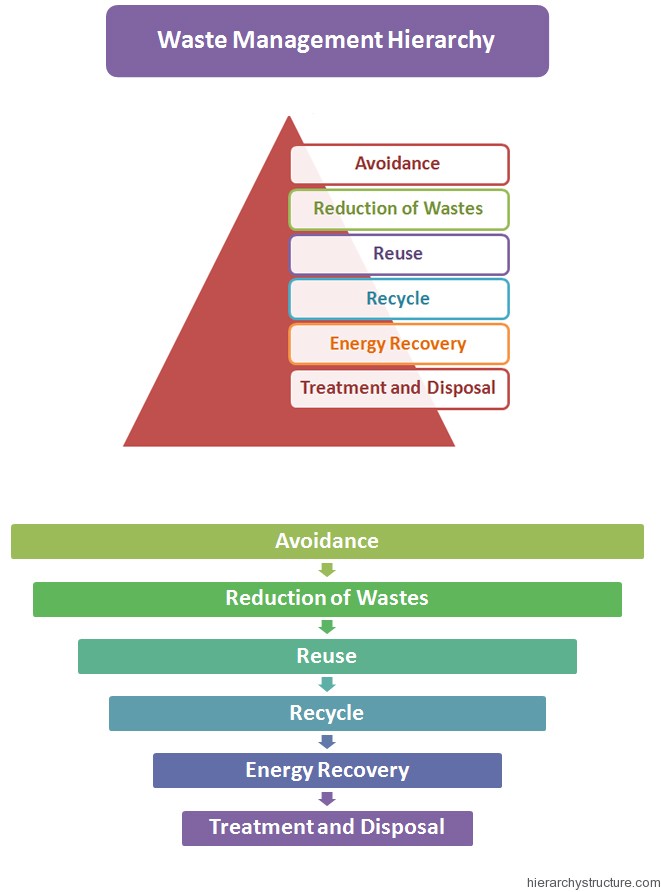Waste management can be briefly defined as the process, in which the different kinds of wastes are being collected, processed and recycled in order to convert them into useful materials or to dispose them in an environment friendly way.
The different types of wastes include the solid waste, liquid waste, gaseous waste and the electronic wastes etc. The waste management hierarchy is a concept regarding the waste management and its acts as a base for developing the various waste management strategies. The sole purpose of drafting the hierarchy is to generate the maximum amount of beneficial products from the available wastes.
In this particular article, we will discuss about the most preferred options of the waste hierarchy and will go down towards the least preferred options. The most preferred options are the options having the best effects on the environment, which have been described here in the hierarchical format:

- Avoidance
- Reduction of Wastes
- Reuse
- Recycle
- Energy Recovery
- Treatment and Disposal
Avoidance
This concept focuses on the measures to be taken so as not to create any type of wastes in the first place. This is given the top priority in the waste management program. According to this principle, the manufacturing industries should make use of less hazardous materials in the design and manufacturing of the products. They should develop strategies to have a cleaner and environment friendly production.
Reduction of Wastes
The reduction of wastes or source reduction is the second preferred option of the waste management hierarchy. According to this concept, the companies should take action to make changes in the type of materials that are being used for the production of the specific products, so as to ensure that the by-products are of the least toxicity.
This approach helps the industries in various ways. In this way, the industries can be able to effectively save the natural resources.
Reuse
Reuse is another effective Solid waste management strategy, in which the waste is not allowed to enter into the disposal system. The wastes are collected in the middle of the production phase and are again fed along with the source to aid in the production process. This process helps in minimizing the amount of wastes produced as end product, saves the natural resources and reduces the costs associated with the production and manufacturing.
Recycle
In the recycling strategy, the waste materials are implemented in the production of a new product. In this process, the waste materials of various forms are collected and then processed. Post processing, they enter into the production lines to give rise to new products. This process prevents pollution and saves energy.
Energy Recovery
The energy recovery process is also called as waste to energy conversion. In this process; the wastes that cannot be recycled are being converted into useable forms of energy such as heat, light and electricity etc. This helps in the saving of various natural resources. Various processes such as combustion, anaerobic digestion, landfill gas recovery, pyrolization and gasification are being implemented to carry out the conversion process.
Treatment and Disposal
The disposal process holds the last position in the waste management hierarchy. Landfills are the common form of waste disposal.
